The Politics of Polarization in Sierra Leone: Navigating Division in a Culturally Homogeneous Society
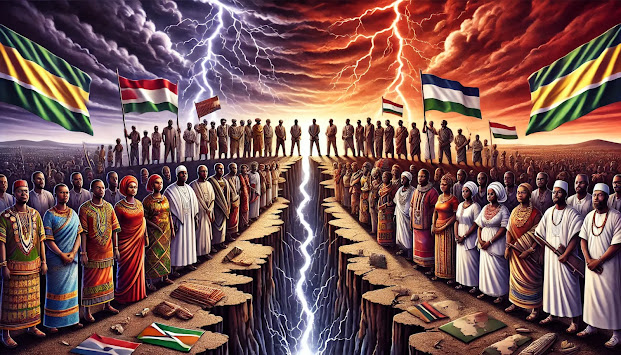
Sierra Leone is a nation that embodies a paradox of cultural unity and political fragmentation. Despite being one of the most culturally and religiously homogeneous countries in Africa, the country remains deeply polarized along regional and partisan lines. The dominant Islamic faith and the Fulani-Mande cultural foundation create profound commonalities among Sierra Leone’s major ethnic groups, including the Mende, Temne, Limba, and Mandingo. Inter-ethnic marriages, the widespread use of common surnames, and the overlapping linguistic traditions suggest that the country should, in theory, have a strong sense of national unity. However, political fragmentation has persisted as a significant challenge, sustained by historical legacies, elite manipulation, and institutional weaknesses. Unlike many African nations where ethnic and religious divisions are the main sources of conflict, Sierra Leone demonstrates how political identity can override cultural commonalities, fuelling instability. Political polarization in Sierra Leone has been reinforced through decades of historical, colonial, and post-colonial political manoeuvring. The two dominant parties, the All People’s Congress (APC) and the Sierra Leone People’s Party (SLPP), have historically entrenched regional loyalties and reinforced a winner-takes-all system of governance. This political culture has created an environment where electoral victories often lead to the systematic exclusion of the opposition, heightening political tensions and fostering long-term instability. To understand why these divisions, persist despite a shared cultural foundation, it is essential to examine Sierra Leone’s historical trajectory, the role of secret societies, the importance of inter-ethnic surnames, and the ways political elites have strategically manipulated these identities to maintain power. The political divisions in Sierra Leone have deep roots in the colonial governance structures established by the British. The colonial rulers implemented a dual system of governance, in which the north was governed through indirect rule—granting significant administrative power to local chiefs—while the south and east were subjected to direct rule under colonial officers. This system created significant economic and infrastructural disparities between the two regions, fuelling political competition and long-term rivalries (Bangura, 2015). At independence in 1961, these colonial divisions continued to shape Sierra Leone’s political landscape. The SLPP, which had led the independence movement, was largely associated with the Mende-dominated south and east, while the APC, founded in the 1960s, built its political base in the predominantly Temne and Limba northern regions. Over the decades, political power has oscillated between these two dominant parties, each reinforcing regional loyalties and prioritizing its strongholds over national governance. The civil war (1991–2002) further aggravated these divisions. While the war was driven by grievances related to corruption, economic marginalization, and centralized governance, it was also heavily influenced by regional factionalism. The Revolutionary United Front (RUF) insurgency, initially framed as a rebellion against state corruption, became deeply entangled in regional power struggles. Though the war ended in 2002, the mistrust it cultivated between political actors has continued to shape electoral politics and governance, making it difficult for the country to move beyond regional partisanship. Despite the deep political divisions, Sierra Leone remains remarkably homogeneous in cultural and linguistic identity. One of the strongest indicators of this shared heritage is the prevalence of common surnames across ethnic groups. Names such as Koroma, Kamara, Conteh, Bangura, Fofanah, and Sesay are widely used among the Temne, Limba, Mandingo, and Mende peoples. These surnames have deep historical origins, tracing back to Fulani, Senegambian, Konyaka, Malinke, and Gbandi-Loko migrations that shaped Sierra Leone’s demographics. The Koroma surname is particularly significant. While commonly associated with the Limba and Temne, it is also found among the Mende-speaking population. This widespread presence reflects the extensive influence of Mande heritage across Sierra Leone. Historically, the Koroma name has been linked to warriors, traders, and political leaders who played crucial roles in both pre-colonial and colonial Sierra Leone. Its presence across ethnic groups also suggests historical ties to the Mali and Songhai Empires, which facilitated the spread of Mande culture, language, and surnames across West Africa. Similarly, the Fofanah surname, widely associated with the Mandingo, Temne, and Mende, has strong Senegambian roots. Many Fofanah families trace their lineage to Fulani-Mande Islamic scholars and traders who migrated southward from Mali and Guinea into Sierra Leone. Their integration into different communities over centuries led to the widespread adoption of the Fofanah name across various ethnic groups. Many individuals bearing the Fofanah name have historically played key roles in Islamic scholarship, governance, and commerce. The Sesay surname is another example of a Mande-Senegambian name that has been adopted across multiple ethnic groups in Sierra Leone. Like the Fofanah name, Sesay is historically linked to Malian and Senegambian expansions, particularly during the height of the Mali Empire’s trade networks. Families with the Sesay name were influential in establishing trade routes, religious schools, and political networks, facilitating economic and social integration across different regions. The name’s widespread presence across various districts reinforces the idea that Sierra Leone’s ethnic groups have long been connected through trade, migration, and intermarriage. Beyond surnames, place names in Sierra Leone also reflect Mande, Fulani, and Senegambian influences. The Koya region, which exists in both Port Loko and Kenema districts, directly references the Mane warriors who established strongholds in Sierra Leone and the broader Mano River Union region. The recurring names Gbendembu (in Bombali) and Nongowa (in Kenema) highlight the influence of Gbandi, Loko, and Mande-speaking groups in shaping Sierra Leone’s geographic and cultural landscape. The place name Sumbuya, found in almost every district, further underscores the deep historical interactions that have shaped Sierra Leone’s modern identity. One of the most enduring cultural institutions that binds Sierra Leone together is the predominance of Mande secret societies, particularly the Poro and Sande societies. These secret societies, which originated from the broader Mande cultural sphere, have played a critical role in shaping political, spiritual, and social life in Sierra Leone. The Poro society, which is primarily for men, functions as an institution of governance, education, and moral regulation. It serves as a training ground
Reconstructing a Forgotten Empire and its Connection to the Mano River and Sierra Leone
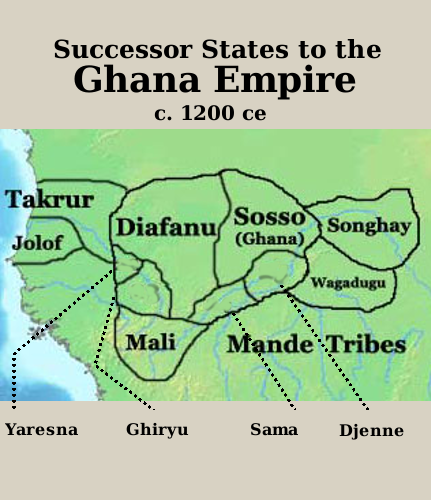
The history of the medieval Western Sudan is a tapestry of empires that shaped the region’s political, cultural, and economic trajectories. While much has been written about the Ghana, Mali, and Songhay empires, the Susu kingdom remains a lesser known but equally important chapter in this narrative. This article explores the Susu kingdom’s historical relevance, geographical reach, and enduring connections to the Mano River and Sierra Leone, drawing on oral traditions, medieval chronicles, and Portuguese records. Stephan Bühnen’s (1994) insightful work provides the foundation for this exploration. The Rise and Influence of the Susu Kingdom The Susu kingdom rose to prominence after the decline of Ghana and before the rise of Mali, dominating the Futa Jalon and Sankaran regions. This kingdom leveraged its strategic location and economic resources, particularly its access to gold from the Bure mines, to become a significant regional power (Bühnen, 1994). Its influence extended to the Upper Niger and beyond, reaching regions close to the Mano River basin. Unlike Ghana and Mali, Susu’s prominence south of Arab trade routes has contributed to its relatively limited documentation in medieval Arabic sources. The Susu people established political and economic structures that laid the foundation for their later connections to Sierra Leone and the Mano River region. The kingdom’s decline began with the rise of Mali under Sunjata Keita and culminated in the 18th century with the Fula jihad, but the Susu people’s legacy endured in their migration and cultural influence across the region. The Susu and the Mano River Region The Susu’s geographical and historical ties to the Mano River region are deeply rooted in their migrations, trade networks, and cultural exchanges. Following the decline of their kingdom, the Susu moved southward, settling in areas near the modern-day borders of Guinea, Liberia, and Sierra Leone. These migrations brought them into contact with ethnic groups such as the Mende, Temne, and Kissi, influencing the demographics and cultural practices of the region. The Mano River served as a vital waterway for trade, linking inland goldfields with coastal trade centers. The Susu, known for their expertise in trade and mining, played a pivotal role in facilitating the exchange of goods such as gold, kola nuts, and salt. Portuguese records from the 15th and 16th centuries document the Susu’s active participation in these networks, particularly along the coasts of Guinea and Sierra Leone (Bühnen, 1994). Cultural and Religious Influence in Sierra Leone The Susu’s migration into Sierra Leone had a lasting impact on the region’s cultural and religious landscape. Their early adoption of Islam contributed to the spread of Islamic practices in the Mano River basin and Sierra Leone. The Susu’s integration into local communities also influenced linguistic and cultural exchanges. For example, the Susu language, part of the Mande family, shares similarities with languages spoken in Sierra Leone, reflecting their historical interactions and intermarriages. In addition to their linguistic and religious contributions, the Susu introduced governance practices that shaped local chieftaincies. Oral traditions in Sierra Leone often highlight the Susu’s role in establishing political structures, emphasizing their historical significance in the region. Portuguese Accounts and European Records European explorers and traders, particularly the Portuguese, encountered the Susu during their coastal expeditions. These records provide valuable insights into the Susu’s role as intermediaries in regional trade. The Portuguese described the Susu as key players in gold exports, which linked the inland economies of the Western Sudan to the burgeoning global trade networks of the Atlantic (Bühnen, 1994). These accounts also highlight the Susu’s presence in Sierra Leone and their connections to the Mano River basin. Sankaran and the Susu Legacy The Sankaran region, identified as the heartland of the Susu kingdom, remained a significant power centre even after the kingdom’s decline. The Konte lineage, central to Sankaran’s governance, continued to exert influence, preserving the memory of Susu’s imperial past. Bühnen (1994) notes that Sankaran’s traditions, including those preserved in the Sunjata epic, reflect the cultural and political importance of the region. The Susu’s transition into polities like Jalo and their eventual absorption into the Muslim Fula state of Futa Jalon illustrate a pattern of continuity and adaptation. Despite losing political independence, the Susu maintained their identity, leaving a lasting imprint on the cultural and political fabric of the Mano River region and Sierra Leone. Conclusion The Susu kingdom represents a critical yet understudied chapter in West African history. Its influence extended from the Futa Jalon and Sankaran regions to the Mano River and Sierra Leone, shaping trade, culture, and religion. By examining oral traditions, chronicles, and European records, scholars like Stephan Bühnen (1994) have illuminated the Susu’s enduring legacy. Today, their contributions remain a testament to the dynamic interplay of migration, trade, and cultural exchange in precolonial Africa. References Bühnen, S. (1994). In quest of Susu. History in Africa, 21, 1–47.https://www.jstor.org/stable/3171880
The Anthropology of the Upper Guinea Coast (10th Century to Present)
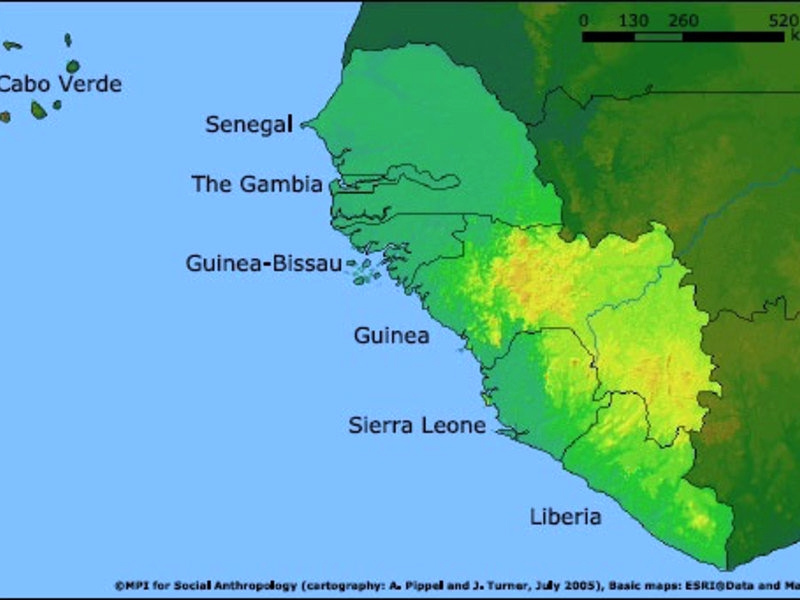
Introduction The Upper Guinea Coast, encompassing modern-day Guinea, Sierra Leone, Liberia, and parts of Senegal and Côte d’Ivoire, has long been a vital crossroads of cultural exchange and historical significance. This region, rich in natural resources and diversity, has evolved from agricultural and fishing communities of the 10th century to a complex cultural mosaic shaped by trade, colonization, and globalization. Anthropological studies reveal how the region’s societies have navigated these changes while preserving their cultural identities. From the early trade networks that linked the Upper Guinea Coast to the trans-Saharan and Atlantic economies, to the influence of Islam, Christianity, and colonialism, this article explores the region’s dynamic history. Through six key themes, it examines the sociocultural adaptations that have defined the Upper Guinea Coast, emphasizing resilience and cultural innovation. The Upper Guinea Coast in the 10th Century Early Societies and Cultures In the 10th century, the Upper Guinea Coast was home to diverse societies that relied on agriculture, fishing, and local trade. Indigenous communities developed sophisticated irrigation systems, particularly for African rice cultivation, a crop domesticated in the region (Carney, 2001). Coastal communities thrived on fishing, which not only sustained their diets but also served as a key trade commodity.Ethnic and linguistic diversity characterized the region, with languages from the Mande, Mel, and Atlantic families reflecting centuries of migration and interaction (Green, 2019). Clan-based social systems, bolstered by oral traditions, provided a framework for governance and social cohesion. Rituals and spiritual practices, often tied to the natural environment, underscored the interconnectedness of human and ecological systems. Trade and Interregional Exchange Catalysts for Change The trans-Saharan trade, linking West Africa to North Africa and the Mediterranean, integrated the Upper Guinea Coast into a larger economic network. Gold, ivory, and kola nuts from the region were exchanged for salt, textiles, and horses, with Islamic traders introducing new governance ideas and religious practices (Curtin, 1971). The rise of coastal trade hubs facilitated urbanization and cultural exchange. Ports such as Bissau became melting pots, fostering interaction between diverse ethnic groups and stimulating local industries like weaving and metalworking (Brooks, 1993). Islamic influence further transformed the region, blending with local traditions and contributing to education and governance. Colonial Encounters and Transformations European contact, beginning with the Portuguese in the 15th century, marked a turning point for the Upper Guinea Coast. Initially centered on mutually beneficial trade, European interests shifted toward the transatlantic slave trade, profoundly destabilizing local societies (Rodney, 1970). Coastal elites, drawn into the trade, restructured their economies and political systems to meet European demand. Colonial powers imposed centralized governance structures, undermining traditional systems and fostering economic dependency. The suppression of indigenous cultures and forced labor systems exacerbated social inequalities. Yet, resistance to colonization and cultural resilience remained evident, laying the groundwork for independence movements in the 20th century (Amin, 1972). Postcolonial Realities and Cultural Resilience The postcolonial period brought new challenges, including economic instability and political conflict. Independence movements across the region reflected a collective desire to reclaim autonomy and cultural identity (Davidson, 1992). Efforts to revive traditional practices, languages, and crafts were central to nation-building, despite ongoing tensions from colonial legacies. Globalization introduced new pressures, including migration and climate change. Communities adapted by drawing on traditional knowledge to address issues such as environmental degradation and social fragmentation. Anthropological studies highlight how cultural preservation and innovation coexist, enabling societies to navigate these modern challenges (Fairhead & Leach, 1996). Religion and Identity Across Eras Religion has been a cornerstone of life on the Upper Guinea Coast, evolving through centuries of interaction. Indigenous belief systems, centered on animism and environmental spirituality, coexisted with Islam, which spread via trade routes, and later, Christianity, introduced by European missionaries (Fyle, 1999). Syncretic religious practices, blending indigenous, Islamic, and Christian traditions, reflect the region’s adaptability. Today, religious institutions play critical roles in community development and conflict resolution, highlighting the enduring relevance of spiritual life in the region (Gray, 1980). Anthropological Studies and Modern-Day Implications The Upper Guinea Coast has been a focal point for anthropological inquiry, offering insights into cultural resilience and adaptation. Modern research explores the impacts of migration, globalization, and environmental change on local societies (MacGaffey, 2013). Anthropological methods, combining ethnography with digital tools, provide nuanced understandings of the region’s dynamic sociocultural systems. Cultural preservation efforts, from documenting endangered languages to promoting traditional crafts, are vital in addressing the challenges of globalization. These initiatives emphasize the region’s role as a case study in human resilience and cultural innovation (Jackson, 1985). Conclusion The Upper Guinea Coast exemplifies the complexities of cultural adaptation and resilience. From its early agricultural societies to its role in global trade networks and its navigation of colonial and postcolonial challenges, the region has demonstrated an extraordinary ability to preserve its identity while evolving in response to change. The anthropological study of the Upper Guinea Coast underscores the universal human capacity for innovation, reminding us of the interconnectedness and diversity that define our shared history. References • Amin, S. (1972). Neo-Colonialism in West Africa. Penguin Books. • Brooks, G. E. (1993). Landlords and Strangers: Ecology, Society, and Trade in Western Africa, 1000–1630. Westview Press. • Carney, J. (2001). Black Rice: The African Origins of Rice Cultivation in the Americas. Harvard University Press. • Curtin, P. D. (1971). The Atlantic Slave Trade: A Census. University of Wisconsin Press. • Davidson, B. (1992). The Black Man’s Burden: Africa and the Curse of the Nation-State. James Currey. • Fairhead, J., & Leach, M. (1996). Misreading the African Landscape: Society and Ecology in a Forest-Savanna Mosaic. Cambridge University Press. • Fyle, C. M. (1999). The History of Sierra Leone. New Africa Press. • Gray, R. (1980). A History of the Gambia. Cambridge University Press. • Green, T. (2019). A Fistful of Shells: West Africa from the Rise of the Slave Trade to the Age of Revolution. University of Chicago Press. • Jackson, M. (1985). In the Shadow of the Bridge: Identity and Religion in West Africa. Clarendon Press. • MacGaffey, W. (2013). Modernity and Belonging in the Upper
The Class and Respect Issues Among the Africans
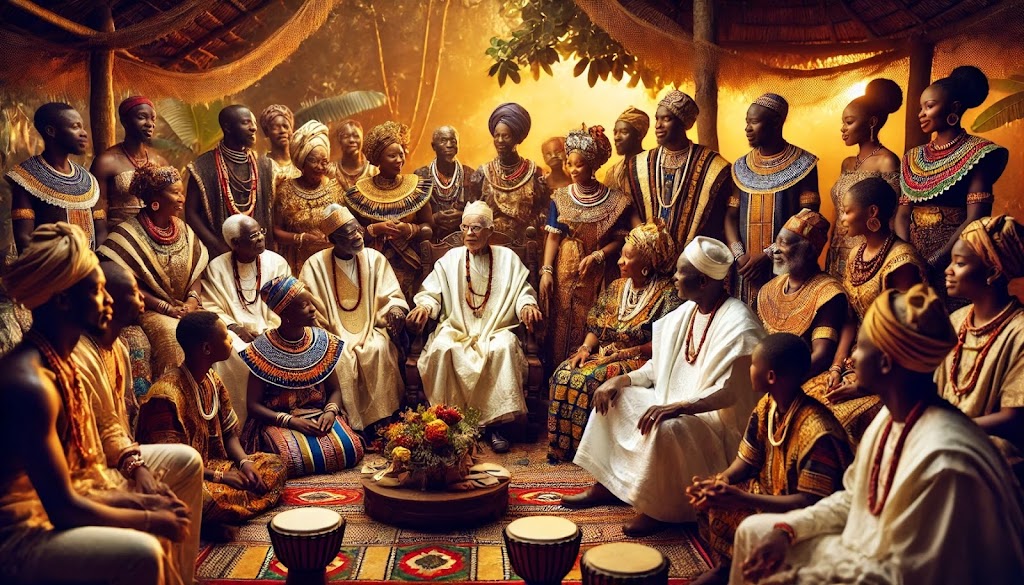
Class and respect dynamics within African societies and the African diaspora represent an intricate interplay of history, culture, and socio-economic structures. These issues are deeply rooted in pre-colonial traditions, colonial disruptions, and modern global influences. Understanding how class stratification and respect norms have evolved within African communities requires examining their historical context, cultural manifestations, and potential pathways forward. Historical Roots of Class and Respect in African Societies Historically, African societies have always exhibited forms of stratification, though these were largely fluid and communal. In many pre-colonial African cultures, respect was tied to age, wisdom, and communal contributions rather than material wealth or rigid class divisions. For example, elders were revered as custodians of knowledge and decision-makers within many African tribes, a value system that still persists in parts of the continent today (Mbiti, 1990). Colonialism profoundly disrupted these traditional systems. European powers imposed exploitative economic systems and hierarchical social orders that undermined indigenous values. The introduction of cash economies and land ownership laws created stark divides between the elite, often educated and European-aligned Africans, and the rest of the population. These colonial class systems, supported by divisive governance tactics, solidified a culture of economic disparity and social stratification (Rodney, 1972). Manifestations of Class and Respect Issues Today In contemporary African societies, class and respect issues are deeply intertwined. Economic inequality, a legacy of both colonial exploitation and neo-colonial structures, exacerbates class tensions. Wealth, often concentrated in urban centers or among those connected to political elites, has become a significant determinant of respect in many communities. This shift represents a departure from traditional respect systems based on character, age, or community contributions. Intra-community Dynamics Within families and local communities, respect is frequently tied to material success. For example, younger family members who achieve financial stability may be expected to command respect from elders, challenging traditional age-based hierarchies. This tension is particularly evident in the African diaspora, where western individualism sometimes clashes with African collectivist values. Gender and Intersectionality Gender plays a critical role in respect and class dynamics. Patriarchal traditions often confer respect based on male authority, while women’s contributions—whether economic or domestic—may be undervalued. However, modern movements advocating for gender equality are challenging these norms. For instance, women-led businesses and organizations are reshaping respect dynamics by emphasizing merit over tradition. Diaspora Perspectives The African diaspora adds another layer of complexity. Africans living outside the continent often face external class and racial hierarchies, which intersect with internal respect norms. For instance, African immigrants in Western countries may experience a loss of social status due to systemic racism, even as they navigate respect expectations within their own communities. The Cultural Significance of Respect Respect is a cornerstone of African cultures, deeply embedded in language, customs, and social interactions. In many African societies, greetings reflect hierarchical respect. For instance, in Yoruba culture, younger individuals prostrate or kneel to greet elders, symbolizing deference and honor (Fasoranti, 2018). Similarly, Zulu culture emphasizes the importance of ubuntu—a philosophy of mutual respect and interconnectedness. However, globalization and modernity are challenging these norms. The rise of individualism, consumerism, and digital cultures has diluted traditional respect systems. Social media, for example, often amplifies materialism, with wealthier individuals gaining admiration regardless of their ethical or communal contributions. Bridging Class Divides and Fostering Respect Addressing class and respect issues requires a multifaceted approach: 1. Education and Awareness: Promoting education about the historical roots of class and respect systems can help communities critically examine and reshape these dynamics. For example, integrating African philosophy and history into school curricula can foster a deeper appreciation for traditional values. 2. Economic Empowerment: Tackling economic disparities is essential for reducing class-based tensions. Programs that support entrepreneurship, especially among marginalized groups, can create pathways to equitable respect. 3. Cultural Revitalization: Encouraging a return to respect systems based on character and community contributions can counteract materialistic values. Cultural festivals, storytelling, and intergenerational dialogues are effective tools for this purpose. 4. Diaspora Engagement: Bridging gaps between African communities on the continent and in the diaspora can foster solidarity. Initiatives such as exchange programs, pan-African cultural events, and advocacy for racial justice can unite Africans globally. Conclusion The interplay of class and respect issues among African communities reflects a complex legacy of history, culture, and contemporary realities. While colonialism and globalization have reshaped traditional norms, there is an opportunity to reclaim and adapt these values to foster unity and equity. By addressing economic disparities, promoting cultural pride, and encouraging intergenerational dialogue, African societies can navigate these challenges and build a future where respect transcends class divides. References 1. Fasoranti, M. (2018). Yoruba Culture and Traditions: A Handbook. Ibadan University Press. 2. Mbiti, J. (1990). African Religions and Philosophy. Heinemann. 3. Rodney, W. (1972). How Europe Underdeveloped Africa. Bogle-L’Ouverture Publications. 4. Ndlovu-Gatsheni, S. J. (2013). Coloniality of Power in Postcolonial Africa: Myths of Decolonization. CODESRIA.
Falsehood,Deceptions , Lies and the Social Parameters informing Corruption and Development in Sierra Leone
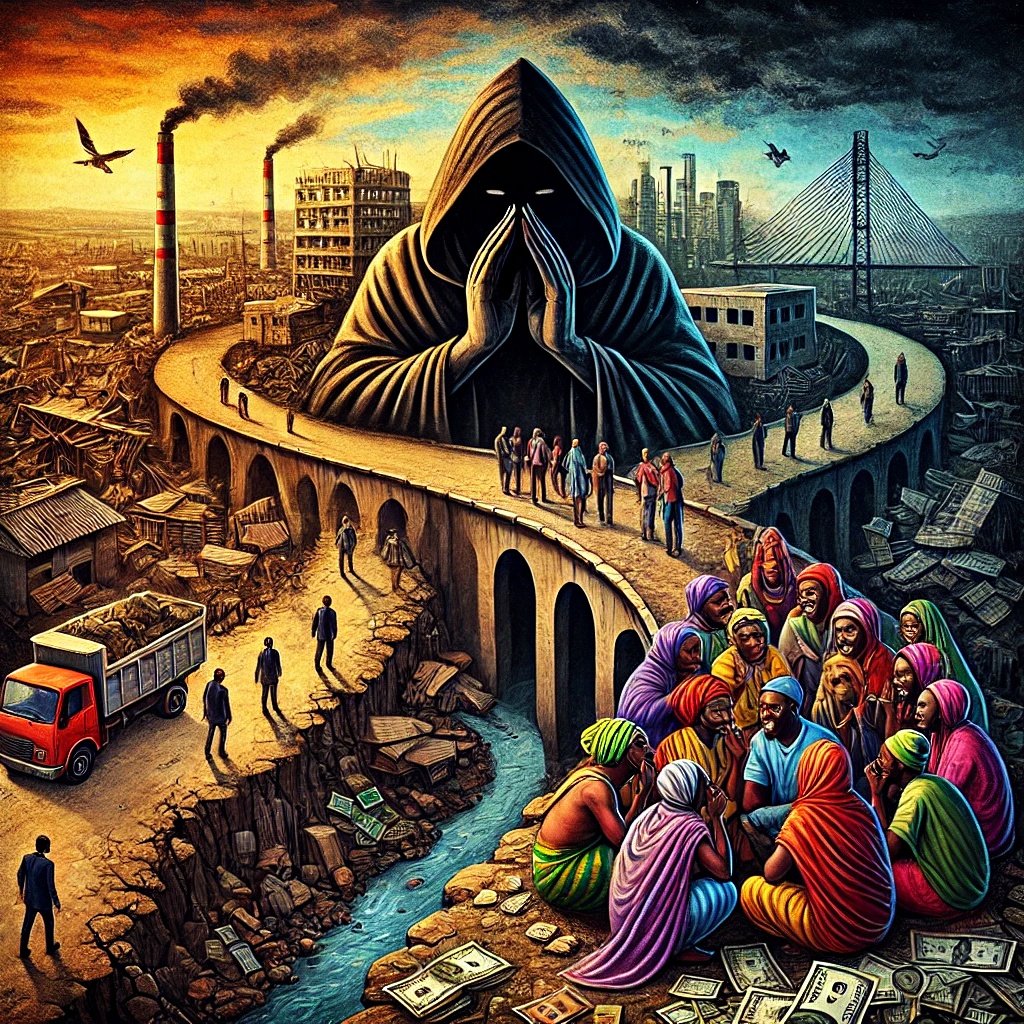
Falsehoods, deceptions, lies, and the social parameters informing corruption significantly undermine stability and development in Sierra Leone. These factors erode public trust, weaken institutions, and impede socioeconomic progress. The following analysis explores these impacts, supported by scholarly references in APA style. Erosion of Trust and Institutional Integrity The prevalence of corruption in Sierra Leone has deep historical roots, contributing to the nation’s fragility and instability. Abdulai and Kubbe (2023) examine the diverse facets of corruption, noting that it permeates various aspects of society and governance, thereby hindering sustainable development efforts. Socio-Cultural Norms and Corruption Societal perceptions and traditional practices can either deter or enhance acts of corruption. Jamboria (2023) discusses how social thinking and perceptions in Sierra Leone influence corrupt behaviors, emphasizing the need for a consensus within society to curb corruption for continued stability and development. Impact on Socio-Economic Development Corruption adversely affects income distribution, investment, government budgets, and economic reforms. Saidu (2023) highlights that corruption increases inequality, decreases accountability, and produces rising frustration among citizens, thereby hindering socio-economic development in Sierra Leone. Undermining Governance and Service Delivery Corruption within local government structures leads to poor service delivery and erodes public confidence in governance. Koroma et al. (2023) highlight that corruption significantly undermines the efficiency of local administrations, leading to poor service delivery and eroding public confidence in governance structures. Conclusion Falsehoods, deceptions, lies, and the social parameters informing corruption have multifaceted adverse effects on Sierra Leone’s stability and development. They erode trust in institutions, exacerbate corruption, impede development efforts, undermine social cohesion, and weaken the rule of law. Addressing these challenges requires a concerted effort to promote transparency, strengthen institutional frameworks, and enhance media literacy among the populace. References Abdulai, E. S., & Kubbe, I. (2023). The Diverse Facets of Corruption in Sierra Leone. Springer. Springer Link Jamboria, M. B. J. (2023). Social Parameters of Corruption and Status in Sierra Leone: How Our Social Thinking and Perceptions Enhance or Deter Acts of Corruption. In E. S. Abdulai & I. Kubbe (Eds.), The Diverse Facets of Corruption in Sierra Leone (pp. 73-89). Springer. Springer Link Saidu, F. (2023). The Impact of Corruption on the Socio-Economic Development of Sierra Leone: A Case Study of Bo City. International Journal of Scientific Development and Research. GSSRR Koroma, S. M., Yusuf, M., Dauda, E., & Gando, J. G. T. (2023). The Effects of Corruption on Local Government Service Delivery in Sierra Leone: The Case of Bonthe District Council. International Journal of Scientific Development and Research.



